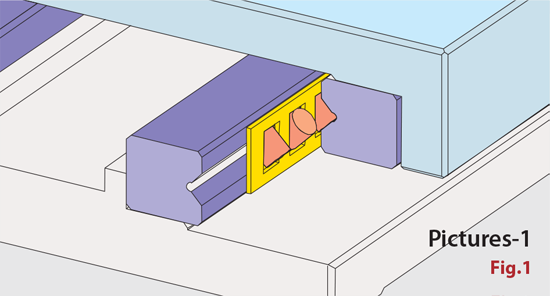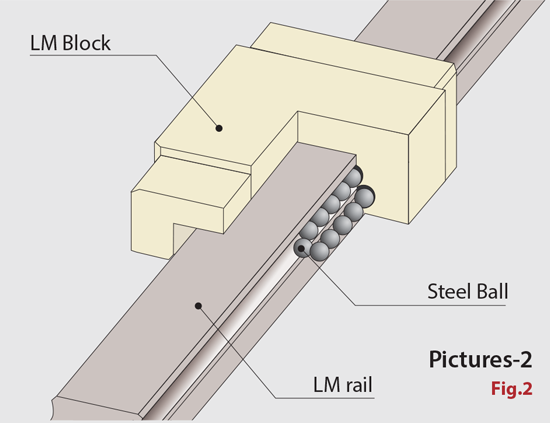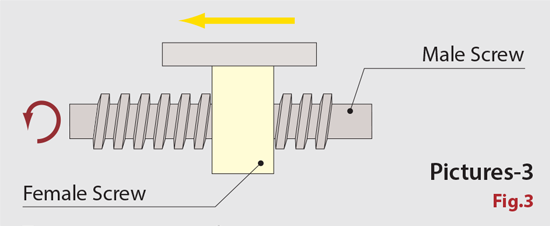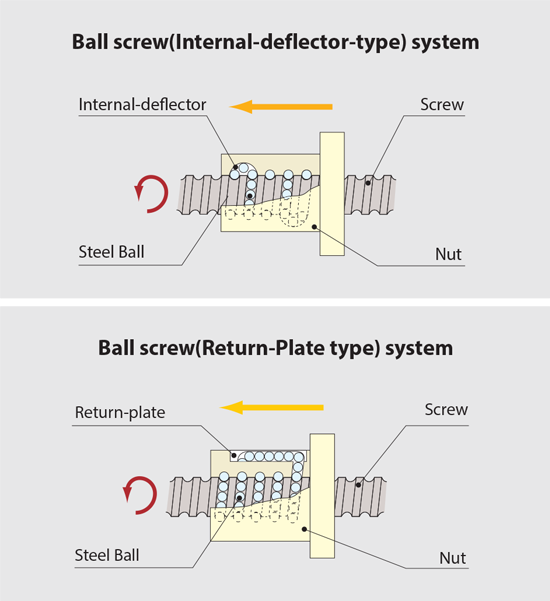Guide Mechanism Type
- 1. Cross -Roller Guide
- In cross-roller guides, quench hardened and precision ground bearing surfaces move upon loose hardened steel cylinders(rollers) with rotation axes oriented in alternating 90 degree angles(Ref. Fig.1). Having rollers arranged in an alternating cross pattern allows preloading and operation at any angle. The roller bearings are held apart from one another by a bearing cage, which prevents adjacent rollers from touching. Since cross roller bearings have little difference between static and dynamic friction they minimize start-to-stop slip-motion typical of other bearing types. The line contact of roller bearings along with precise roller-to-race gap management provide larger load-bearing surfaces, higher preloads and meet very tight runout and stiffness specifications.

- 2. Linear Guide
- The linear guide system consists of a LM rail and steel ball(see Fig. 2). The ball rolls in the groove of the rail, is picked up by an end cap at the LM block, passes through the circulating hole in the LM block main body, and returns to the other end. Since the sliding surface is fabricated by quenching and abrasive finishing, the rail surface is precise, flat and hard. The ball is set in the pseudocylinder shaped groove formed by the sliding surface. Since the pseudo-cylinder surface and the bearing are in contact with each other at two points or four points, slipping does not easily occur

Lead Mechanism Type
- 1. Ground Screw
- The ground screw is ground at high precision and is held in place by a female screw(see Fig. 3). Since the ground screw and female screw are in contact with each other over a wide area, they do not move even if a horizontal load is applied to the stage. Also compared with the ball screw, the feed distance per rotation can be reduced to improve the resolution.

- 2. Ball Screw
- The ball screw consists of a screw spindle, a nut, and steel ball between them(Fig. 4). When the screw is rotated, the ball rolls and moves between the ball screw and the nut, and then returns to its original position. Since a ball is rolled, the friction is low, a high transmission efficiency is obtained, the difference between static friction and dynamic friction is small, and stick-slip does not easily occur
- ※ Resolution : The resolution of the stage can be obtained by the calculation below





